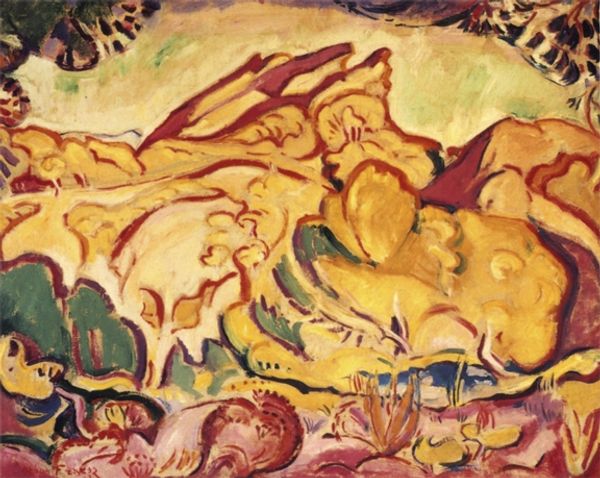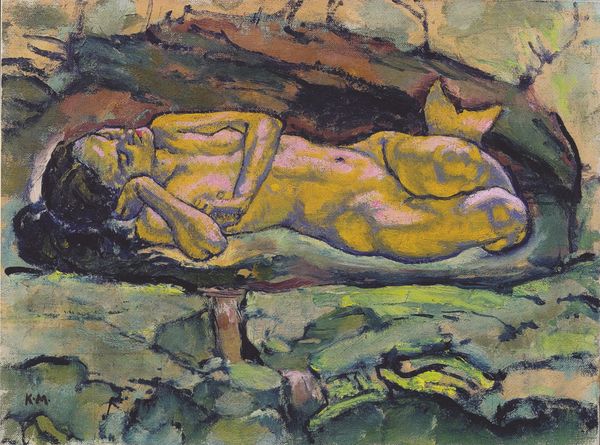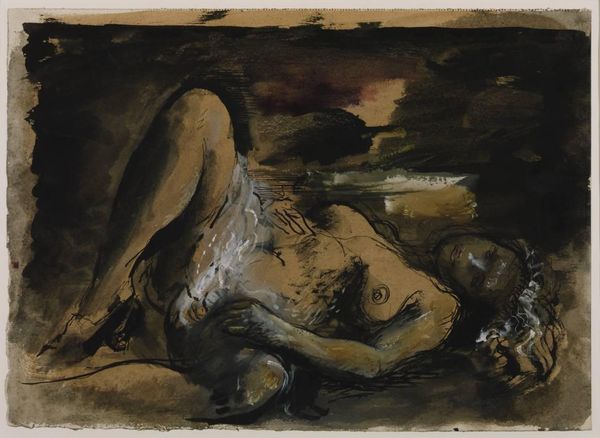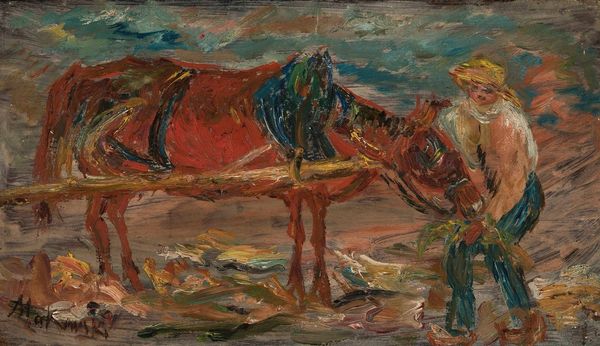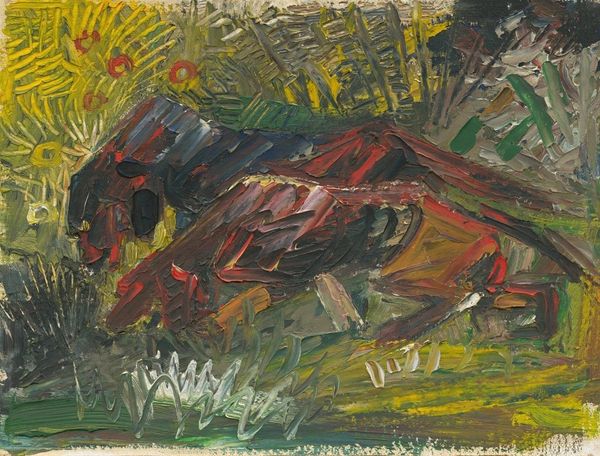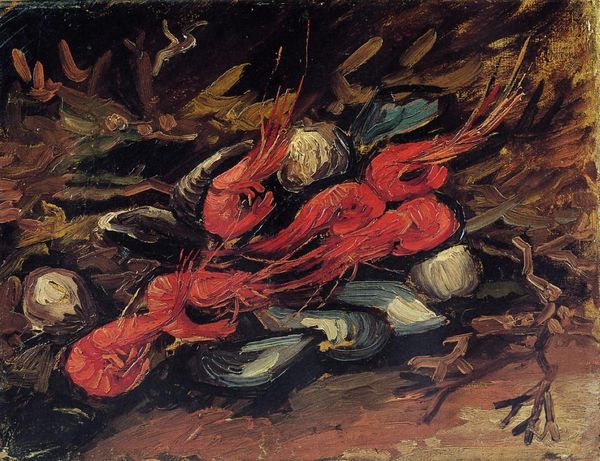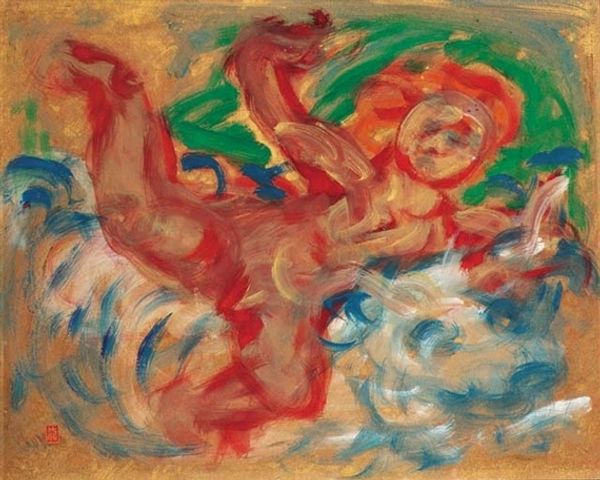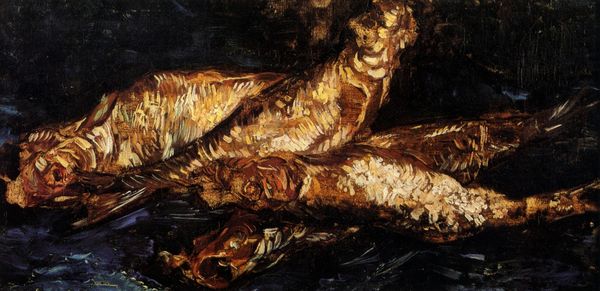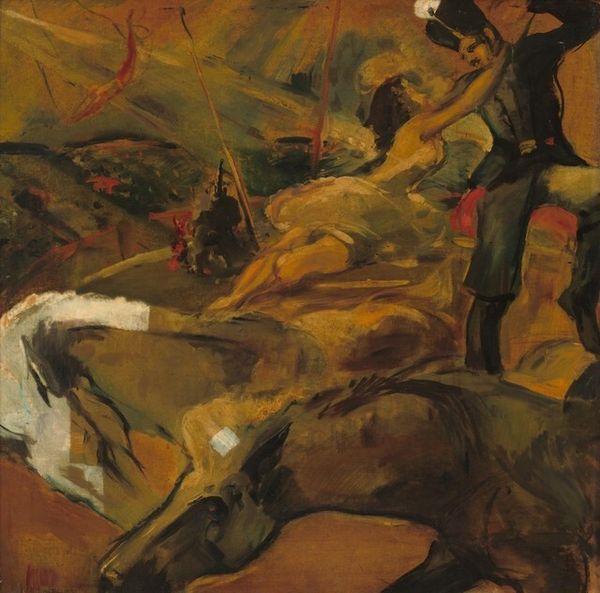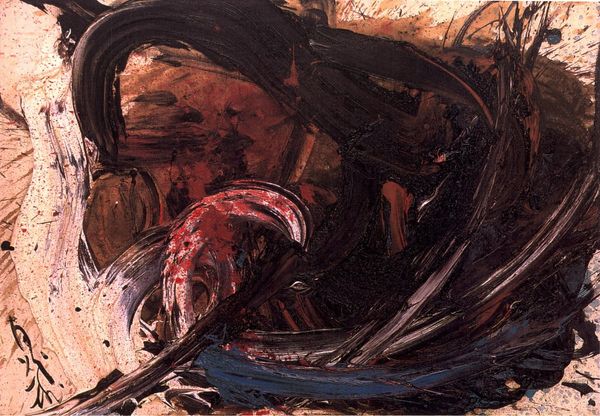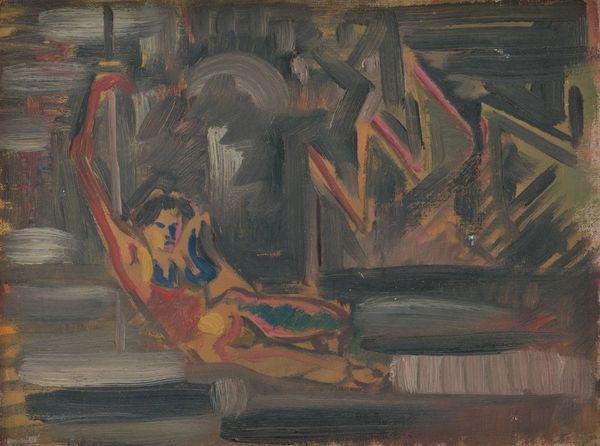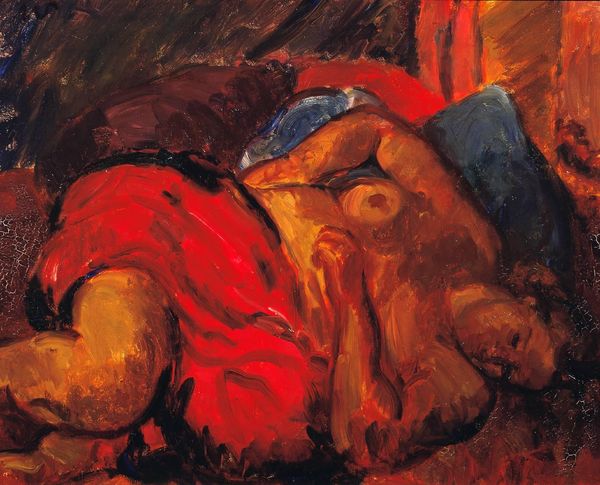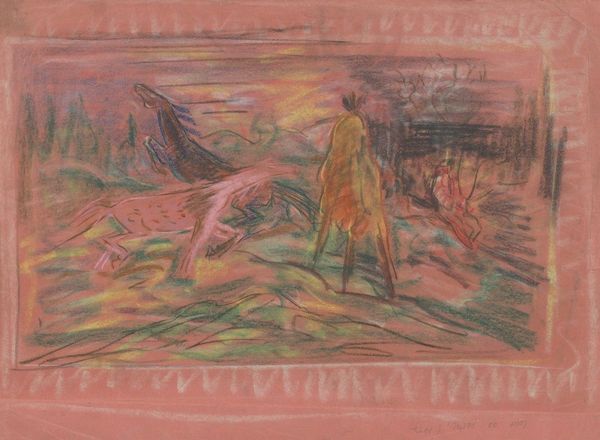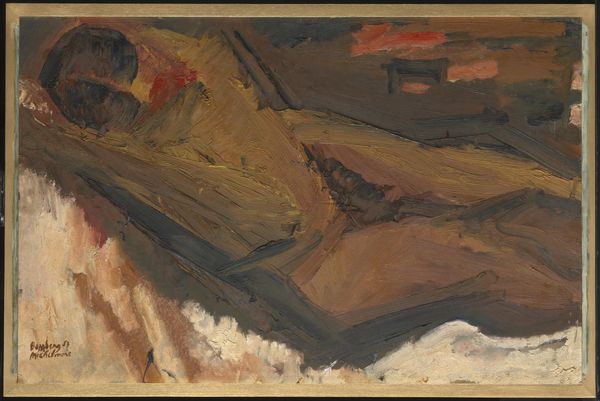
oil-paint
#
abstract expressionism
#
oil-paint
#
landscape
#
figuration
#
oil painting
#
momento-mori
#
neo expressionist
#
neo-expressionism
#
history-painting
Dimensions: 18 x 24 cm
Copyright: Enzo Cucchi,Fair Use
Editor: Enzo Cucchi’s “Goccia di terra,” from 2007. The striking use of oil paint creates a very visceral scene; the ochre tones mixed with intense blacks. It feels quite raw. What's your take? Curator: We should first examine the materiality here. The visible brushstrokes, the impasto; this isn't about illusion, but the literal application of pigment onto a surface. Do you see how the materiality of oil paint—its thickness and texture—creates the visual drama and communicates something tangible about Cucchi's process? It seems deeply connected to land. Editor: I see the textures now, like he’s almost sculpting the paint! The land references… those skulls seem to sink into the landscape, the oil reflecting off of them. Is he trying to comment on consumption? Curator: Exactly. Consider Neo-Expressionism and its challenge to Minimalism. Cucchi utilizes oil paint, a very loaded material, and directly references painting’s historic role. And in that, its labor. The act of painting itself, the struggle, is laid bare. The subject itself, land, is always bound up with human labor and social exploitation. Editor: That's interesting! I never considered how the actual *application* of the paint could carry such a message, the burden or pleasure of the material. The bull now feels more like something wrestled with, than depicted. Curator: Right. Think about the social context: Italy, post-War, with the rise of consumer culture, a shift from agrarian life. Cucchi perhaps uses these rough techniques and symbolic landscapes to ground us in materiality when our realities and identities begin to be abstracted. Editor: So the choice of materials and technique, not just the imagery, reveals a critical perspective on society… Fascinating, this changes everything. Curator: Yes, this piece is all about how materials carry historical, cultural, and social weight. It prompts us to contemplate who makes what, and to what ends.
Comments
No comments
Be the first to comment and join the conversation on the ultimate creative platform.
